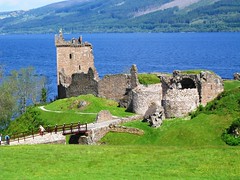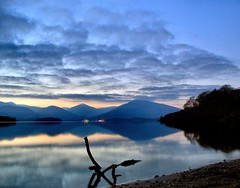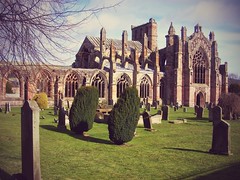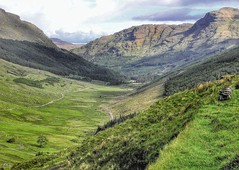Highland Games 2016
Our listing of Highland Games Events in Scotland in 2016. Not a definitive list (although we try) but as many as we have been contacted about.
Please note that at this early stage we still have some games with their 2014/5 dates. We update when we discover new listings and details and over the first few months of the year, we should get all our Highland Games listings for 2016 up to date and accurate. Where possible, we provide links and contact listings in case you need them. If you are the organiser of your local games or simply know new dates: please email details to This email address is being protected from spambots. You need JavaScript enabled to view it.
Scotland's Highland Games season runs from May through to September when the final games is normally the Pitlochry games. They vary from the huge event like the Braemar Gathering to very small, local events that are every bit as charming. If you are in the right area, definately take the time to get to your local games as they are always wonderful community events that bring the traditional cultures of Scotland to life.
The Highland Games Tradition
Highland Games are a unique combination of sports, (sometimes ersatz) culture and most importantly local community. They comprise a programme of field and track events, piping and Highland dancing competitions andsometimes some 'heavy events' like the tug-o-war, the hammer throw and tossing the caber.
It's said the Highland Games originate from Ireland in 2000 BC and that they crossed the water to Scotland with the fourth and fifth century migrations of the Scotti (original Scots people) into Dalriada (Argyll).
The contests of strength – jumping, running, throwing and riding – were introduced by Malcolm Canmore in 1040 as a means of selecting the most able men for soldiers and couriers. Many local highland games have unusual trials that were watched by the chieftain. At Aberfeldy, it is lifting a huge round stone and carrying it for a distance. This proved you were ready and strong enough to be a clan warrior.
1822 Revival
Over time the Games grew in number and popularity but they suffered an almost fatal blow with the Act of Proscription in 1746 following the crushing of the Jacobite Rebellion. The Act outlawed a range fo Scottish customs includingwaering traditional plaid, highland customs and gatherings and was in force for almost 40 years. After its repeal the Games started to revive and the fortunes of this national custom was given a tremendous boost with the visit to Scotland in 1822 of George IV. This event is commemorated to this day in two famous Edinburgh landmarks – George Street and George IV Bridge.
Piping and Highland dancing
The Games, of course, are as much about music and dancing as they are about sports. Dancing, piping, fiddling, and playing the clarsach (Gaelic harp). There was a competitive element here too. The clan chieftains pitted their pipers against those of other clans and the prestige that came from success was considerable. It was not merely pipers but also singers who would sing songs of their clan and its lineage and history and often interject ribald remarks about competitors clans at the same time.
Very much a local tradition
Each gathering is very much a part of local community and in rural areas often features local agricultural produce with sheep and cattle being judged for quality. It is an opportunity for local young men to show off their muscle and general manliness even if the visiting professionals often take the honours at the end of the day. Likewise, many young dancers travel from Games to games each weekend, but every highland games will have a few local favourites trying a reel.
Clan Gatherings
Some games are strongly associated with individual clans and there will be a parade of clansmen led by the chieftain. This will comprise of locals as well as many visitors from around the world who will have visited for the occassion and it is mark of the continued pride that many ex-patriot scots still feel for their Highland and Scottish inheritance that they make a point of returning to mark the occassion and express their sense of connection with their Scottish roots.
Facts about the Highland Games
Scotland's Highland Games, with their traditions of tossing the caber throwing the hammer, are famous throughout the world.
But do you know where the world's oldest Highland Games take place, or where they toss giant champagne corks instead of the caber? Find out below in our list of Highland Games facts.
- The Highland Games in the village of Ceres in Fife (normally in June) is supposed to be the oldest free games in Scotland. It began under a Charter awarded to the community by King Robert the Bruce in recognition of the villagers' support for him at the Battle of Bannockburn in 1314. Many people participate in ‘haggis hurling’ in which a haggis is thrown. The contestant to throw their haggis the farthest wins.
- The Braemar Gathering which take place during the first weekend in September, is the only Games attended annually by the British Royal Family.
- Prosser Scottish Festivals and Games in Washington State in the United States, is renowned for the "Anvil Launch" where a blacksmith's anvil is thrown into the air with a quarter-stick of dynamite attached! Bluidy Yanks - always have to go one better!
- At the Bellingham Highlands Games in Ferndale, Washington, you can hunt 'Nessie eggs'. Small watermelons are hidden around the game park; lucky finders can then swap their Nessie eggs for prizes. Preumably, these eggs are somewhat easier to spot than the real Nessie!
- Snefjørd Highland games Finnmark, Norway, are the most northerly Highland games in the world. Logan Park in New Zealand is probably the most southerly.
- At some Highland Games in France a giant champagne cork is tossed instead of a caber.
- The Caledonian Club of San Francisco host the largest Highland Games in the Northern Hemisphere.
- The world record for the biggest bowl of porridge was set at the Cupar Highland Games in Fife in 2010. The huge breakfast of 690 litres of porridge cooked could feed 2,000 people and was more than double the existing record - did they add salt or sugar and cream, we wonder.









